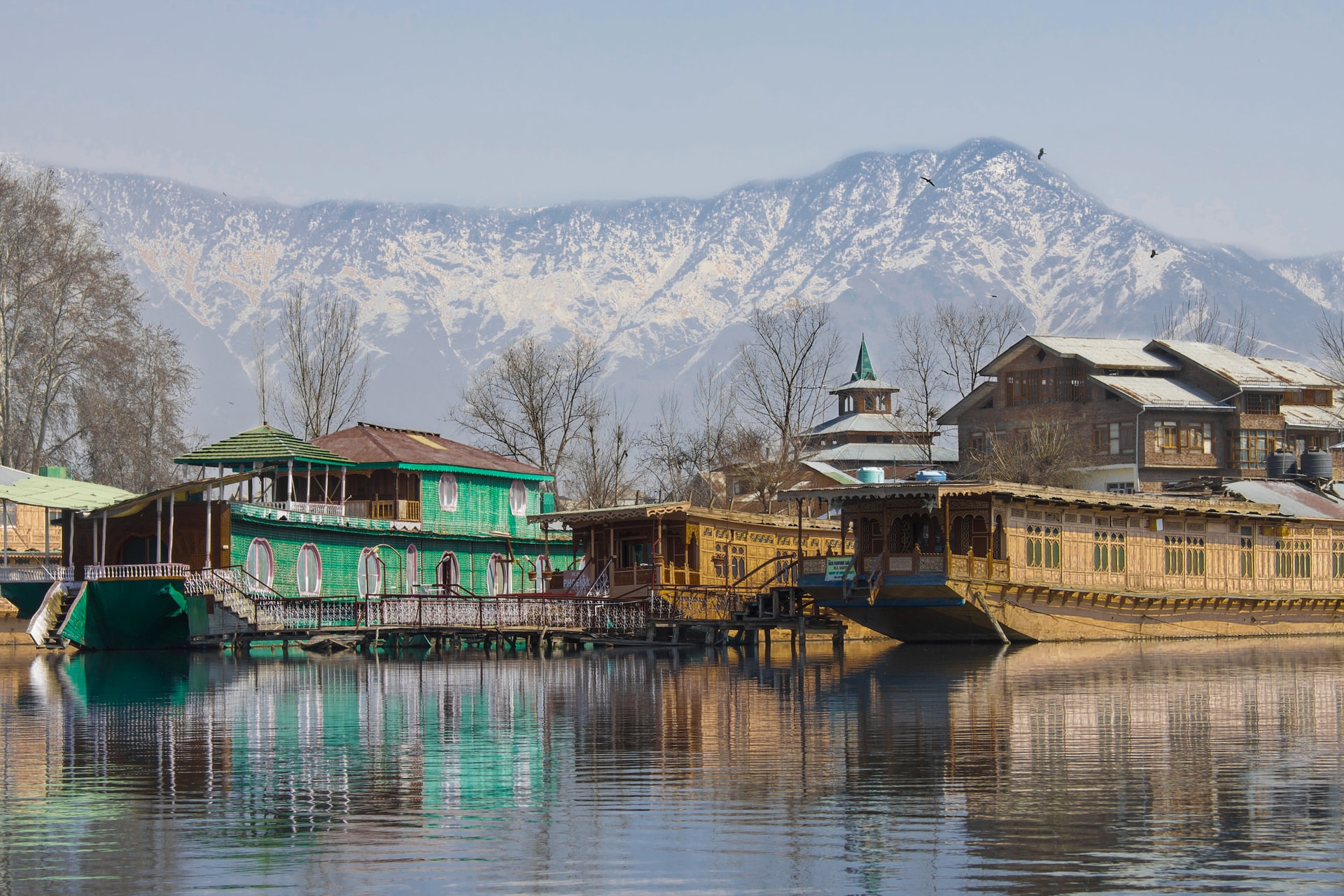
Looking for the best places to visit in North India? Keep reading!
The lockdown has indeed managed to keep everyone locked down in the walls of their homes. Now that the world shows signs of opening up, many are planning or at least thinking of planning a trip! ( be it something as small as weekend getaways)
The Indian summers ended while keeping everyone in soaring temperatures! After the much-needed change in the climate, the winters are here to help you keep your cool (literally and otherwise). The festive season is just commencing with which we also welcome the holidays! This winter, make sure you plan a trip to remember!
We’re sure the traveller within you is itching to go out to the alluring mountains of North India. Here, we present to you the top places to visit in North India during summer and winter!
The online winter wear store: Kosha.co
13 Best places to visit in North India in summer & winter
Leh, Jammu and Kashmir.
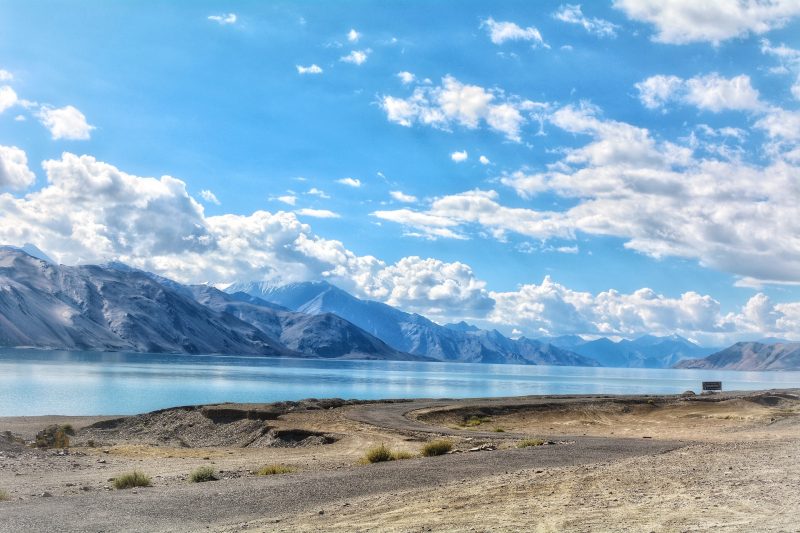
Leh, Jammu & Kashmir
Leh Ladakh is one of those places that marks its presence on everyone’s bucket list. Leh was the capital of the Himalayan kingdom of Ladakh and is now in the Indian state of Kashmir.
This place is renowned for the popularity it has received due to the various bikers’ communities. It is on every biker’s bucket list to pay a visit to Leh in their lifetime.
Biking is a great way of transportation and exploration as such high altitude places cannot have railway stations or trains functioning on a slope. No matter how much the high terrain and the steep slopes scare the people travelling in buses, they surely make Leh attractive for the bikers as the difficulty of scaling adds to the challenge.
Apart from biking, Leh is famous for being ‘a star location’ to get the celestial view! It is home to crystal clear skies making it all the more beautiful for stargazing during the night! You can check this out for yourself when you visit Leh! The Pangong lake in Leh and the Nubra village in Ladakh are well-known places for the same!
If you think we are out of things that sell the qualities of Leh, you are mistaken! It is also the home to India’s most difficult and beautiful winter trek- Chadar Trek. Done over the frozen river Zanskar in the Zanskar range, this trek is as rewarding as it is difficult, if not more. ‘Chadar’ means a sheet. The trek is named Chadar as white icy snow is seen forming a blanket over the frozen Zanskar river where this trek finds its base.
Coming back to Leh, the place gets extremely cold during the winters. The temperature can dip lower than -20 degrees celsius. Hence, June-September is regarded as the best time to visit. Always better on a bike, Leh is a journey that doesn’t have a destination. Transformational for many, Leh is surely a trip that cannot be forgotten easily (not that you would want to anyway)
Dharamsala, Himachal Pradesh.
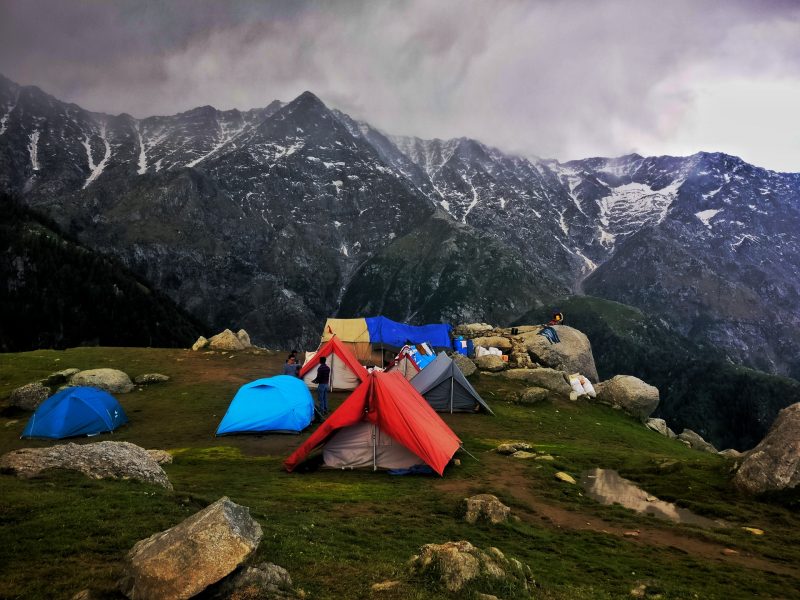
Camping in Dharamshala
Dharamshala is a city located in the Kangra District, it is the winter capital of Himachal Pradesh. Winter capital means that the state has more than one city that acts as the capital.
Upper Dharamsala (also called McLeodganj) is the residence of the Dalai Lama and headquarters for the Central Tibetan Administration. A beautiful scenic area, McLeodganj is home to some of the best cafes and Tibetan cuisine restaurants.
Dharamshala is one of the places that witness a pleasant amount of snow! The winters in this city will be something that everyone should see for themselves! Dharamsala is also rich culturally. It hosts many festivals of its own. This small city also has its own International Film Festival. The Dharamshala International Film Festival or the DIFF is something every movie buff should take a look at. It takes place in November every year.
Home to most of the adventures and treks, Himachal Pradesh has a lot in store for you. Dharamshala has everything to offer from the scenic view of hills, mountains, and valleys to the very pleasant winds and atmosphere.
This place is best visited during winters which are seen from November to February. This is when the weather and climate are pleasantly cool and the temperature range extends from 20 degrees Celsius to 0 degrees Celsius.
The summertime is also characterized by cool weather. The temperature range is around 22 degrees Celsius to 30 degrees Celsius. Avoid visiting Dharamshala during the monsoons as it rains very heavily during this period i.e from July to September.
Spiti, Himachal Pradesh.
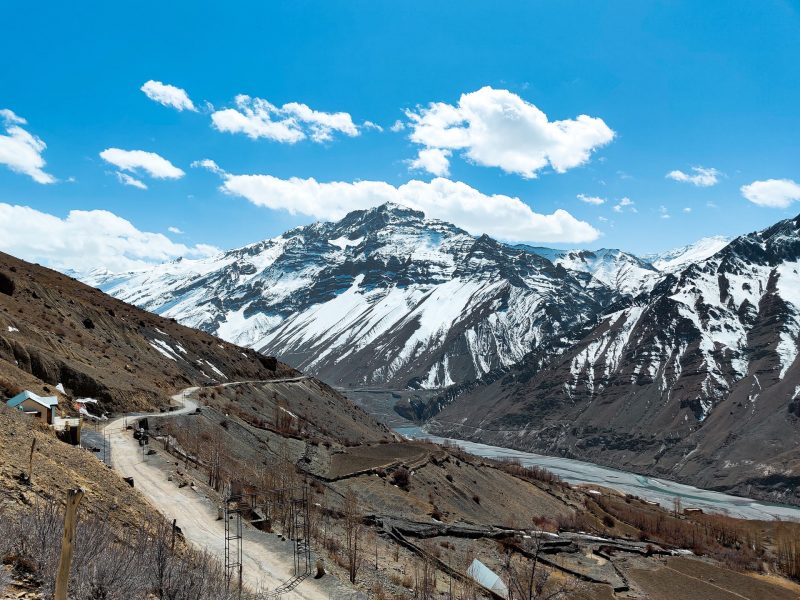
Snow-capped Peaks in Spiti
The word ‘Spiti’ means ‘The Middle Land’ as it is a part of Tibet in India thus being a middle land between the two places. Spiti is a desert mountain valley in the Himalayas and forms the northeastern part of Himachal Pradesh.
The districts, known as Lahaul- Spiti were formerly two distinct districts of Lahaul and Spiti. Being just a little away from Chandra Tal, this area of Spiti is connected to Rohtang Pass.
The Hikkim village in Spiti-Lahaul is located at a very high altitude. It has the world’s highest post office at a height of around 14,000 ft.
The best time to visit Spiti valley is from March to June with a pleasant temperature range of 0 degrees Celsius to 15 degrees Celsius. The area is said to be a little unpredictable with an extreme cold during the winters.
The period from July to September is marked by harsh rainfall and an increased possibility of natural hazards like landslides. Thus, it is better to avoid the rains, even for the daredevils.
For the adventure enthusiast, Mountain Biking is another sport done in the serene, winding roads of Spiti. There is also river rafting carried over the rivers of Spiti and Pin. Chandratal camping is also an experience that is sought after by many. Try the Spiti valley trek and get to experience all of these.
Spiti, like most places in the country, is very rich when it comes to culture and history. There are places of worship like the Key monastery, Tabo monastery, Dhankar monastery, Kunzum Pass which tourists, as well as locals, visit with an equal amount of zest. Suraj Tal Lake, Chandratal Lake, Pin Valley National Park are all places that are loaded with natural beauty and waiting to be explored.
Dalhousie, Himachal Pradesh.
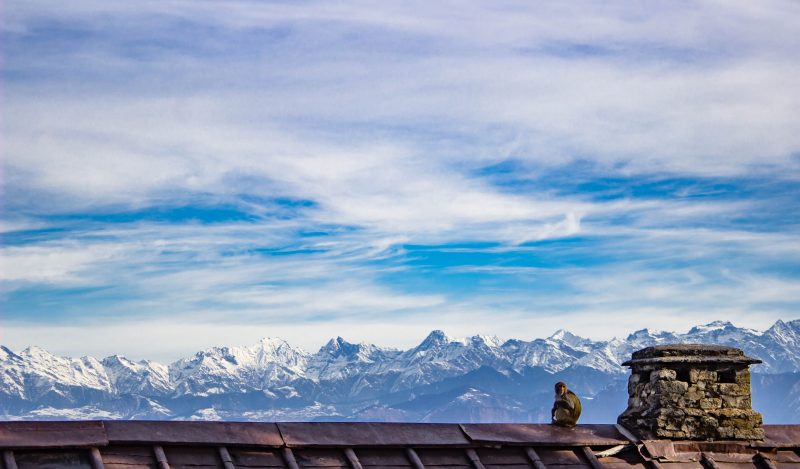
View from Dalhousie
Another jewel of Himachal Pradesh, Dalhousie is a hill station that shouldn’t be skipped! Spread out over the five hills of Kathlog, Potreys, Tehra, Bakrota, and Balun, this town was very popular with the British army personnel in the 1860s. This place was formed in the year 1854 and has been named after the 19th-century government general- Lord Dalhousie. It is located at an elevated altitude of around 2000 meters.
Dalhousie experiences two major seasons of summer and winter. The winters here are pleasant with the temperature ranging between 10 degrees Celsius to 1 degree Celsius. The summers here can be a little harsh with the temperature reaching as high as 30 degrees Celsius.
Also called the ‘little Switzerland of India’, this colonial town has retained its charm over many years. Places like Panchpula waterfalls, Khajjar lake, Chamera lake, Daikund peak and many more, are a definite must-visit, especially for the sight-seeing lovers! A natural spring in Dalhousie named Karalenu is known to have medicinal properties.
Apart from being a popular hill station with a serene climate, the place is also rich culturally. Dalhousie is home to many churches and is also a repository of many temples. A town with so many places of worship will naturally have a very rich history!
The Kalatop wildlife reserve is something that lovers of wildlife shouldn’t miss. This particular reserve is located between Chambal and Dalhousie. Apart from the animals, you will also be looking at various snow-clad peaks over the lush green mountains and a spread of tiny hamlets.
Himachal Pradesh is one such state that includes many diverse and beautiful sites! If you too are fascinated with what this place has to offer, you can even opt for a Himachal tour package, this winter.
Vaishno Devi, Jammu Kashmir.
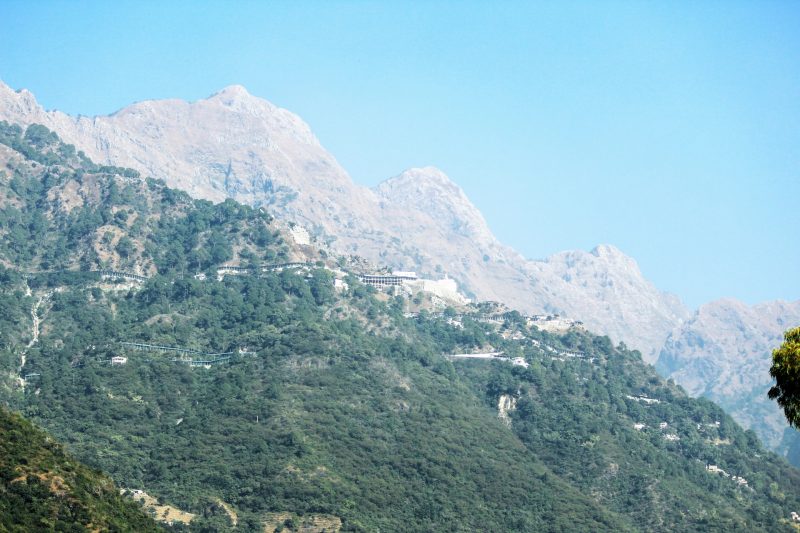
Vaishno Devi Temple Hill
Vaishno Devi is one of the most renowned Hindu temples in the state of Jammu Kashmir. It is one of the most popular pilgrimage shrines in India. Located amidst the Trikuta Hills, this shrine is named after Vaishno Devi, the creation of goddess Parvati.
Presently near the town of Katra, Jammu and Kashmir comes in the Reasi district. The place is for the religiously inclined but the experience is phenomenal for everyone who pays a visit. The state of Jammu and Kashmir is the heaven on earth that everyone should visit at least once in their lives.
When one looks deeper into the history, it is interesting to know that it is Vaishno Devi who prayed during the ‘Navratra’ wishing for the safe return of Lord Ram. The Navratra period is now celebrated in India as Navratri which is a nine-day festival thus leading to its name Nava-Ratra (9 nights). The Navratri period is when the celebrations in the Vaishno Devi temple are in full swing, thus making this the best time for visiting the place.
The winters here extend from December to February, they are pleasant with temperatures ranging from 13 degrees Celsius to -5 degrees Celsius. In summers, it tends to get warmer as the temperature range varies from 17 degrees Celsius to 31 degrees Celsius.
This shrine is surrounded by many other temples. Baba Dhansar is a Hindu place of worship. It is also a temple cave with a sacred pool. Bhairo Baba temple, Ardhkuwari Mandir, Krimchi Temples, Bhairon Mandir, etc are some of the other shrines. There is also a Bhimgarh fort and a Chenab rail bridge that can be visited.
Pahalgam, Jammu Kashmir.
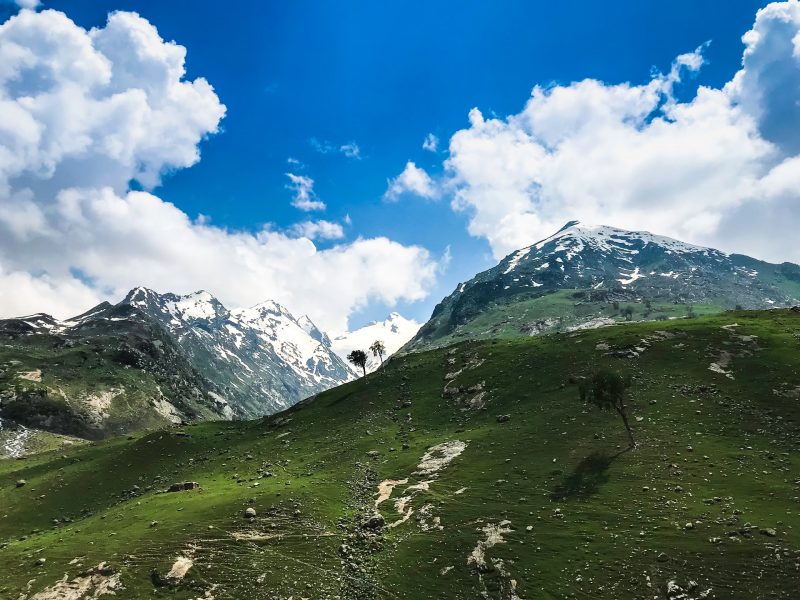
Pahalgam Mountains
Pahalgam is a town and a Municipal committee in Anantnag district in India’s northernmost state of Jammu and Kashmir. Located on the banks of the Liddar River, Pahalgam is very popular among the devotees of the Shiva for the Amarnath Yatra.
Wikitravel calls it a heaven on Earth where you can spend two to three weeks without getting bored. It is also an adventure spot for tourists as apart from treks, white water rafting, pony rides form to be the activities that can be done here.
Another unique activity that can be done here is fishing! Most of the people interested in fishing love to fish for trout in the rivers of Pahalgam.
The Overa Aru wildlife sanctuary present in this region is also an attraction amongst tourists. Spread across 400 sq km, this reserve is a hotspot for animal lovers. It is a protected area that is home to various sensitive species of birds and animals.
Everything from the Egyptian vulture, European roller to the Kashmir musk deer and the Asiatic ibex coexist here living in peace and harmony.
Chandanwari is the place that marks the start of the Amarnath yatra. Based 15 km away from Pahalgam, this place is also home to activities like snow-sledging on the snow bridge etc. Betaar valley across the Liddar river is also a place worth visiting. This locality is so surreal, it looks like something out of a painting.
Baisaran is an area with straight stretches of land, super green meadows and play parks for all games and activities. The Lidder amusement park is another area where one can enjoy bumping car rides, miniature railways, paddle boats and other activities which can be enjoyed by a kid and an adult alike.
The Kolahoi glacier is only for the worthy as you have to trek to reach this place. It is a trek that is inadvisable for beginners as it is a very challenging climb. The Sheshnag lake is another tourist attraction in Pahalgam. Being placed at an elevation, this lake is a place sought after by many nature lovers.
Valley of Flowers, Uttarakhand.
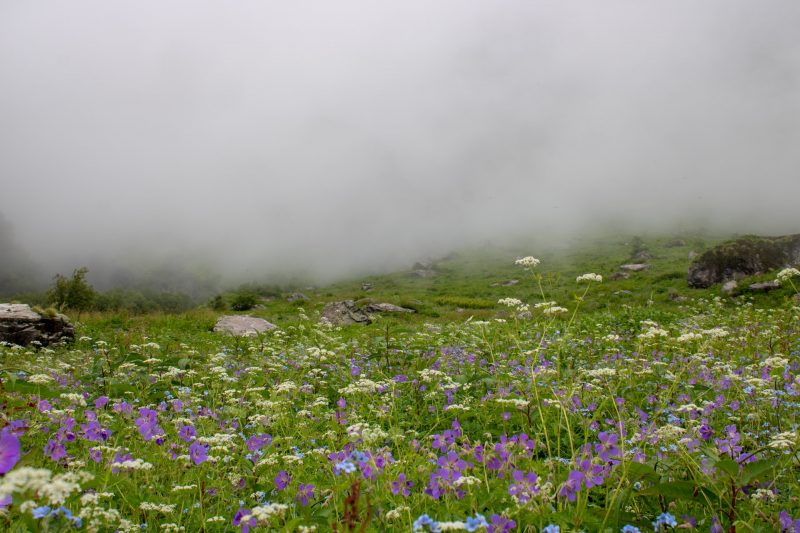
Valley of Flowers
Nestled in the western Himalayan region in Uttarakhand, the Valley of Flowers is one of the most picturesque places you’ll ever witness.
Situated in the Bhyundar Valley, it is at an elevation of 3658 meters above sea level. It was declared as a National Park in 1982 and now, in 2002, it is considered amongst Unesco’s world heritage sites.
Valley of Flowers is one of India’s oldest known treks. Done in the Himalayas, it is of moderate scaling level. People are known to fall in love with the activity of trekking after they try the Valley of Flowers.
Uttarakhand’s most famous trek is best done during the monsoons. However, this Pahari beauty is open for tourists all year long.
If you find yourself in the Valley of Flowers, make sure you pay a visit to Nanda Devi National Park. This place is also a World Heritage Site where one can find diverse species of birds and animals. The Nanda Devi peak is also India’s second-highest peak. The Park is open for visitors from June to October. The Nanda Devi national park, along with the Valley of Flowers is also included as a part of UNESCO world heritage sites.
A place of worship called Gurudwara Shri Hemkunt Sahib can also be visited as it is placed only some km away and is reachable via a hike. It is a shrine that can only be visited from May to October. Hemkund Lake, located next to the Gurudwara is also a highlight of this area. It is known as the ‘Lake of snow’.
Varanasi, Uttar Pradesh.
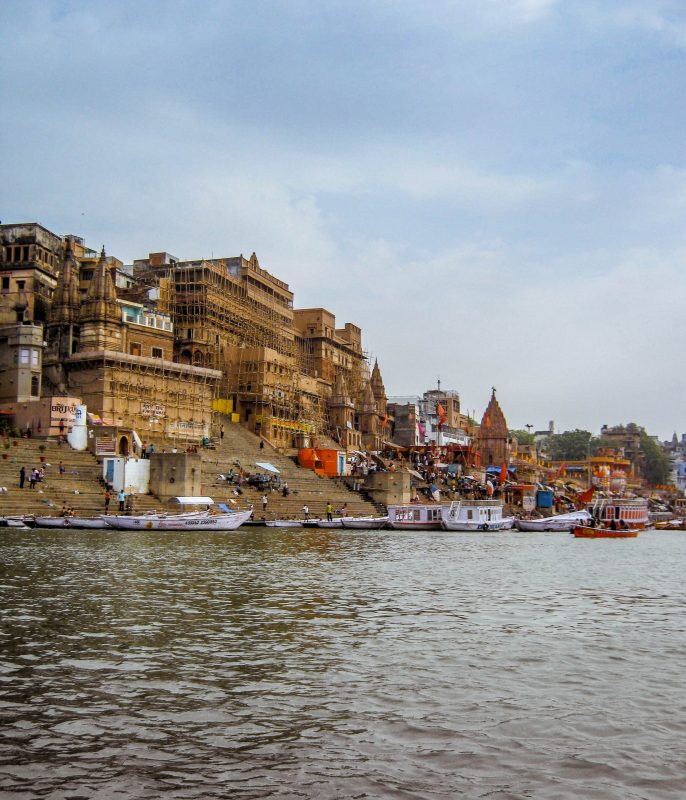
Varanasi
Known as the spiritual capital of India, this city of Uttar Pradesh is a definite must-visit for those looking for an ethereal, mystic experience. This city’s most renowned aspect would probably be the Ganga or the Ganges River.
Known for its sacred water, this river is where a majority of Hindu pilgrims come for performing funeral rites. There are more than 2000 temples including the popular ones of Kashi Vishwanath in Varanasi. It is the oldest city in India thus adding to its ancient, sacred appeal.
Taking a dip in the holy water of the Ganges is considered very pure according to Hindu culture. The name of this city is mentioned in the various epics of Hindu mythology like Mahabharata or Ramayana.
For those who cannot tolerate a lot of heat, summers would be inadvisable for visiting. The temperature in summers ranges from around 27 degrees Celsius to as high as 38 degrees Celsius.
The winter temperature is tolerable with a range that extends from 9 degrees Celsius to 27 degrees Celsius.
Mussoorie, Uttarakhand.
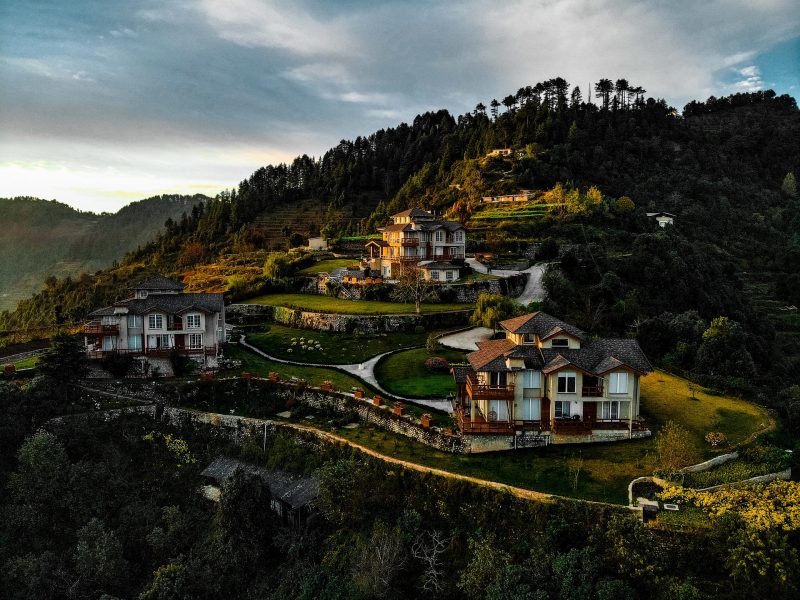
Mussoorie
Mussoorie is known as the Queen of Hills and is located at a distance of 35 kilometres from Dehradun. It is situated at a height of 2000 meters and is a very popular hill station. The lush green hills, varied flora and fauna with the amazing view of the Shivalik ranges make it a must-visit place.
This soothing hill station has allured many famous personalities. As it is evident by his writing, Ruskin Bond is very fond of this part of India. So much so that one can still see this famous author talking evening walks around this place as he visits a café here every Saturday to meet his fans.
Mussoorie is also home to many Tibetans as there is a heavy presence of monasteries throughout the region.
Owing to its lush greenery and views of the ice-clad mountains, this beautiful place is also a very famous destination for honeymooners for weekend getaways! This colonial hill station features cosy cafes, churches, beautiful architecture, buildings and bustling markets to lure tourists all year round.
Mussoorie is best visited in summer as it acts as a place of solace from the harsh summers of the country. It usually snows in Mussoorie during the winters (December to February) thus enticing the snow-lovers.
Mussoorie is also a renowned hub for education and business. The famous Lal Bahadur Shashtri academy of Administration is located in Mussoorie where officers are trained for Indian Administrative Service and Indian Police Service. Haridwar, a city at a distance of about 2 hours from Mussoorie, welcomes tourists to the popular Mansa Devi temple.
For the lovers of wildlife, Rajaji National Park is situated only two hours away from Mussoorie and at around 6 hours away from Mussoorie is the Auli hill station. Check out Auli tour packages to know more about the skiing activities that take place here.
Parvati Valley (Malana and Kasol), Himachal Pradesh.
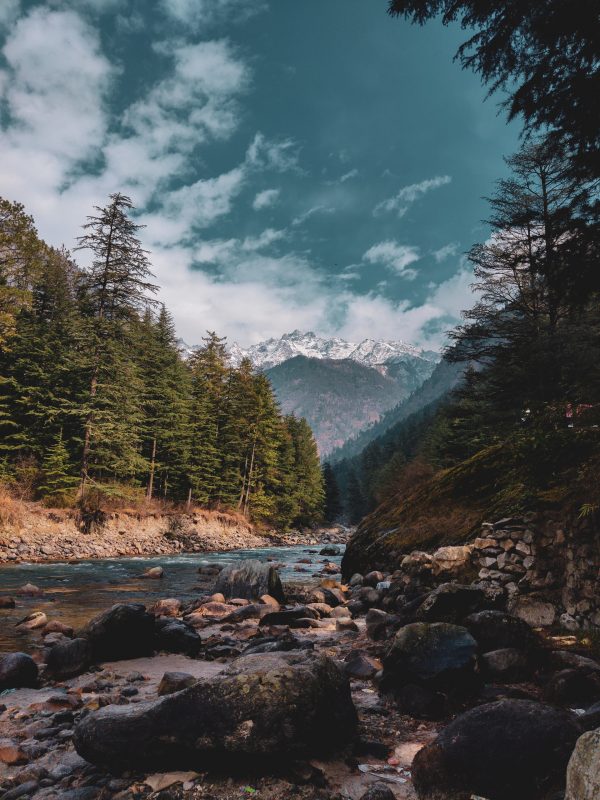
Parvati Valley
Situated in the Kullu district of the Himachal Pradesh, Parvati Valley runs eastward after the confluence of rivers Parvati and Beas. The valley stretches from Bhuntar to Spiti and is a great mix of scenic locales and some amazing spots for adventure seekers.
Parvati valley is famous for its trance festivals and hippie cafes. It is believed that the region got its name some 3000 years ago when Lord Shiva meditated in this region in the form of a Naga sadhu. Several seasons went by and as he opened his eyes to the beautiful landscape, he ended up naming it Parvati valley.
And while you’re here, Malana should surely be on your map. It is a small hamlet in Himachal which has isolated itself from the rush of the world. It is surrounded by the majestic peaks of Chandrakhani and Deotibba.
Malana is a solitary area in the Malana Nala, a side valley of the Parvati Valley.
Kasol is yet another lovely village that lies between Bhuntar and Manikaran. and is well-known amongst the tourists who explore the tranquillity of the place while trekking. The scenic landscapes, exquisite terrains and diverse cultures of this hamlet are definitely worth visiting. Kasol is also known as the ‘Little Greece’ of India.
Parvati Valley is best visited from March to June when nature is at its best. One can indulge in camping, stargazing or many such outdoor, adventure activities.
The temperature range during the summers is from 25 degrees Celsius to 17 degrees Celsius. Another good time to visit this place is after the rains, from October to February. In order to enjoy the ice-clad mountains and the frozen rivers covered with a blanket of snow, visit Parvati valley in winter!
The average temperature seen is from 10 degrees Celsius to 3 degrees Celsius.
Parvati Valley and its neighboring towns of Kasol, Tosh, Malana, Manikaran form a cluster of memorable places in Himachal.
Amritsar, Punjab.
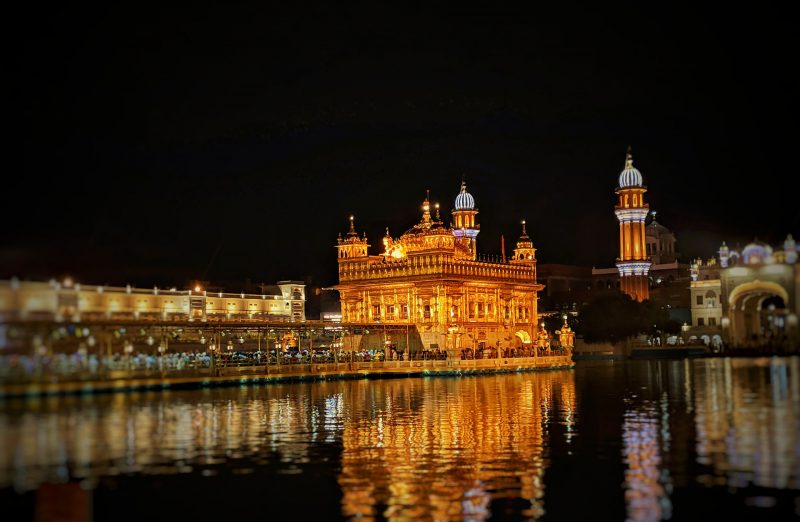
Amritsar
Well, we’ve covered the three prominent states of north India – Jammu and Kashmir, Himachal Pradesh and Uttaranchal- extensively in this list. The reason for this is that we’ve tried to keep a focus on the mountains (owing to our #PhotoCards campaign) but on your way there, Amritsar is something you can’t miss. The Golden Temple will leave you in awe!
Only 28 km away from the border, the city of Amritsar shares its boundary with the country of Pakistan. Located at the heart of the city is the holiest Gurudwara of Harmandir Sahib. It is referred to as the Golden Temple colloquially. The most unique feature of this temple would be that it is made entirely out of 24-carat gold.
Golden temple is a major tourist attraction for people all over the world. Anyone can stay in the temple free of charge as the devotees of Guru Gobind Singh make sure not a single person goes hungry. Healthy meals are served all day long to anyone and everyone visiting the temple.
Some key things that you should buy in Amritsar are pashmina shawls, carpets, phulkari embroidery dress fabric, handicrafts, Pakistani juttis and woollen sweaters. A popular souvenir from Amritsar especially for the lovers of sweets is Pinni which are ladoos made of lentils and jaggery.
Wagah border has a unique border closing ceremony that takes place every day during sunset. Wagah is a 31 km drive to the west of the heart of Amritsar. This ceremony is a 45-minute-long process during which both sides of the border witness the parade. Do make sure you book a ticket in advance as it may be crowded during peak time.
Just behind the Golden Temple is the renowned Jallianwala Baugh, a public garden and a very prominent part of Indian history. An estimated 1500 people were brutally massacred when an open cease-fire took place during the Indian Independence movement in 1919. You can pay a visit to the martyr’s gallery where one can still see the bullet holes.
The best time to visit Amritsar would be from November to March during the winters. This period is known for pleasant weather conditions. The temperature range is 4 degrees Celsius to 22 degrees Celsius. January is the coldest month in Amritsar.
Paying a visit during summers should be avoided as the temperature range is 25 degrees Celsius and can shoot up to a temperature as high as 40 degrees Celsius.
Gulmarg, Jammu Kashmir.

Gulmarg
A popular skiing destination in the northern state of Kashmir, Gulmarg or Gulmarag (as the Kashmiris call it) is a must-visit! It is situated at a distance of only 49 km from Srinagar. The best time to visit this place depends upon your tastes and fancies!
If you visit Gulmarg during April and early May, you will be mesmerized by the beautiful, lush green meadows. A visit during winters ensures snow-capped mountain peaks and a picturesque view of the icy, gigantic Himalayas!
This place offers a varied range of outdoor activities to both adventure and nature lovers. Some of the popular tourists attractions include a Gondola ride, shark fin, Baba Reshi Shrine, Apharwat peak and pony rides too!
The Gulmarg Gondola is a two-tiered ride wherein the visitors are taken to Kongdori which is at an altitude of 2600 mts and then they are further taken to an elevation of 3747 mts at Apharwat peak. Tourists get to witness the magnificent view of the clear skies and they also can take a look at Nanga Parbat from there.
Golfing is another popular sport played ideally in summers here, at Gulmarg. Gulmarg is the proud owner of the world’s second-highest golf course located at 22650 mts.
The estimated temperature range in Gulmarg’s summer which extends from April to September is 13 degrees Celsius to 35 degrees Celsius. October to March is considered as winter in this place and the temperature range is around -4 degrees Celsius to 11 degrees Celsius.
Nainital, Uttarakhand.
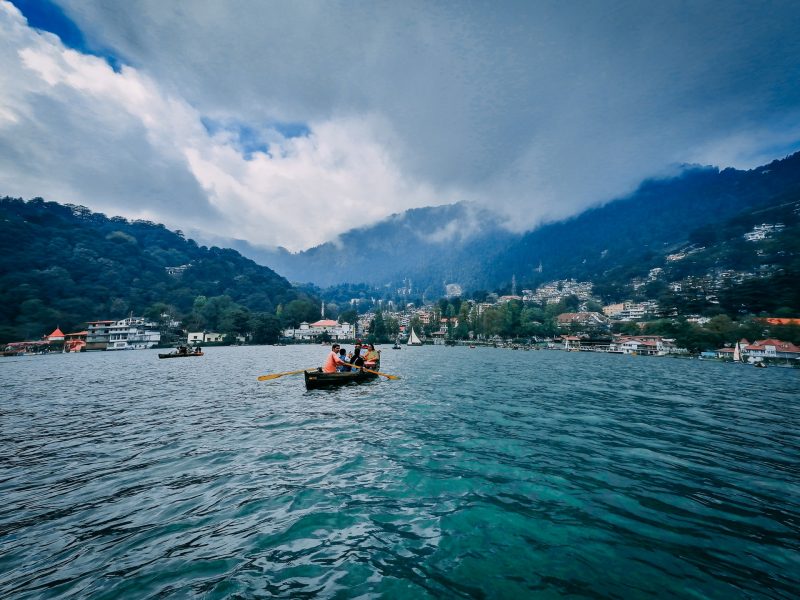
Nainital
Nainital lies in the Kumaon region of Uttarakhand. Being a popular hill station, it is located at an elevation of 2000 meters. This was formerly a British hill station and is now a popular boating site due to its proximity to Naini lake.
This place is renowned due to the serene Naini lake which also has a Naina Devi Hindu temple located at its northern tip. Nainital receives snowfall at an interval of every 2-3 years. Govind Bhallapant Marg is a new name given to the mall road in Nainital which is also a popular tourist attraction.
At a short distance of just 63 km from Nainital is the world-famous Jim Corbett National Park. Being a popular tourist destination, this Park is famous as it has the presence of the magnificent beast known as the Royal Bengal Tiger. With proper research, you will be able to find a great Jim Corbett tour online.
The Corbett Tiger Reserve in Jim Corbett has more than 200 Royal Bengal Tigers present. The best time to spot these would be during winter mornings. Besides this species, there are many other animals to see here. The wide range of flora and fauna shouldn’t be missed either!
Nainital is open for tourists all year long; however, the best time to visit this destination is during the summer season. One can visit during the popular time which extends from March to June! Other northern states famous for wildlife adventure would be Rajasthan and Himachal Pradesh where the Ranthambore National Park and Kalatop wildlife sanctuary are located, respectively.
Packing list for travel in summer and winter
Clothing is the underdog of every trip. People often forget the importance of researching and looking for suitable options for the kind of apparel that is worn. To plan a successful trip, it is necessary to research well in advance.
Looking at the kind of weather conditions, the time of the visit and the purpose, the kind of clothes to be carried can be planned.
Traveling for both summer and winter can be a tedious task. Looking at the kind of temperature range the destination has, there are a variety of options to select from.
In summers, if the purpose of the visit is adventure or activities like trekking, mountaineering, hiking etc, packing something that helps shield from warm temperatures is necessary. Breathable material that allows the person to have a free flow of movements is the most appropriate.
I am sure everybody knows this already, but I am going to have to repeat to highlight its importance. Cotton is the best summer wear material there is!
Procuring cotton is very convenient as this material is available in abundance and obtainable for cheap. It is the kind of fabric that helps you retain your cool in hot temperatures. Wearing loose, cotton clothes is absolutely a yes-yes! Ps – Wear white to throw the heat away from your body instead of absorbing it.
Linen is yet another fabric that is effective and comfortable to carry in summers. It is very light and woven loosely. Further linen keeps you cool and dry which is a great quality to have in your summer apparel.
This might be surprising but even silk acts as a great summer material. Its feather-soft touch makes it comfortable. The cloth is very airy and breathable. But do keep in mind that sweat is very visible on silk garments, so choose wisely!
When it comes to winter travelling, make sure there is a lot of time spent on research and planning. Winter clothes are a fashion segment by themselves. More important than how good you look during your travel, is to make sure you’re properly insulated and comfortable in what you are wearing.
If the purpose of the winter trip is winter activities like snow hiking, winter trekking, skiing etc., make sure the kind of winter clothing you have allows you free flow of movements.
The material should also be breathable. It should be light in weight, compressible and easy to pack.
To pack winter clothing, you must know of winter layering. Layering consists of mainly three (and one more) layers that should be worn in a specific order to get the maximum insulation required for keeping oneself warm.
The three main layers are the base layer (innermost), mid-layers and shell layers or outerwear. Winter accessories form the fourth informal layer. The components of all of these layers will be explained below-
Sweaters and Pullovers
Sweaters make for the classic winter garment whereas pullovers are a comparatively newer addition to winter fashion. Sweaters may seem a little old-fashioned to some, however, matching up to their hype in the older generation, these winter garments have a lot of utility.

Comfortable Pullovers
They are very durable and long-lasting. Sweaters have versatility as they can be worn at many places while being great synthetic insulators.
Kosha’s range of sweaters is made of merino wool and acrylic. They are available in many colours for both men and women. Kosha’s sweaters for men are available in dual coloured style while having a ribbed cuff and a bottom hem.
They can be worn by themselves in a temperature range that extends from 15 degrees Celsius to 5 degrees Celsius. By pairing these with additional layers, they can also be donned in temperatures as low as -5 degrees Celsius.
You can check out neat sweaters for men here | For women here
Mid-layers are the garments best suited to shield oneself from the extreme heat of the sun. The kinds of garments included in mid-layers are hoodies, pullovers etc. These can be used both in summer and winter as they protect the skin while being breathable. Kosha’s hoodies are made from 100% organic cotton whereas the pullovers are made of Supima cotton.
Supima cotton is superior quality Pima cotton that works very well in keeping the person dry. These mid-layers can work by themselves in a temperature range from 10 degrees Celsius to 20 degrees Celsius. One can pair them with other layers for extra insulation. Kosha’s pullovers are super stylish and perfect for any kind of informal visit.
Kosha’s organic cotton hoodies are made sustainably by taking the necessary precautions. These hoodies are made of a unique combination of organic cotton and bamboo. This unique but effective combination ensures that the person is warm and comfortable.
You can check out comfy sweatshirts for men here | For women here
You can check out stylish pullovers for men here | For women here.
Baselayers
Baselayers are a very crucial element of dressing up during winters. As some would rightly say, they are the foundation of winter clothing. Base layers form the innermost lining of clothes and are to be worn underneath regular clothes. As this layer of clothes is in constant touch with the skin, it is crucial that it is soft and comfortable.
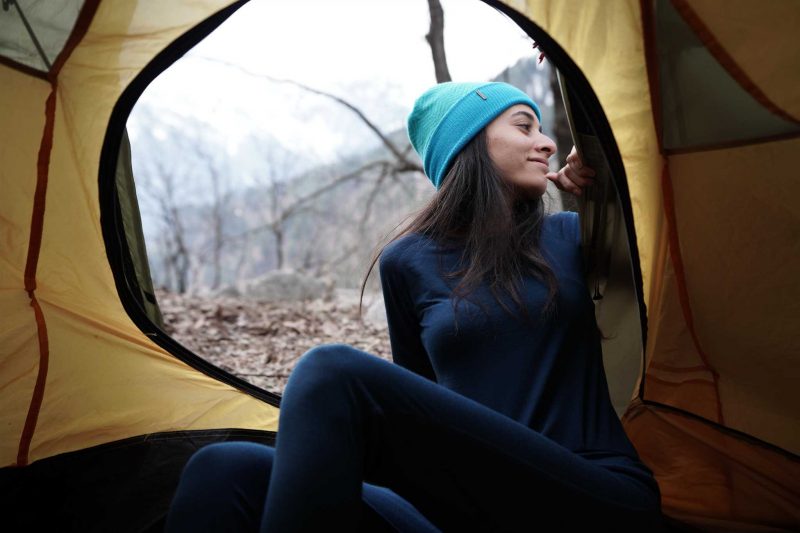
Warm Base Layers
The two most important functions base layers do are that they prevent the cold air from seeping in and being the innermost lining, they prevent the body heat from escaping. Thus, these layers keep the body insulated and ready for all the winter activities.
Base layers are super light in weight. They are also very breathable and they allow free flow of movements. As mentioned above, Kosha’s base layers are made out of a unique combination of merino wool and bamboo.
Kosha received client feedback saying that the base layers are itchy. Taking this review very seriously, Kosha reinvented the product thus strengthening its make and making it a reformed, more durable product.
Now, Kosha’s base layers are one of the top products they have! These thermal-based base layers are very versatile. They include the added features of being moisture-wicking, durable and loaded with anti-bacterial properties.
Kosha’s base layers are available as t-shirts and thermal pants. They can be worn by themselves in a temperature range of 15 degrees Celsius to 10 degrees celsius. With the correct pairing of other compatible layers, the base layers can work well in temperatures as low as -20 degrees Celsius.
You can check out merino wool thermals for men here.
You can check out merino wool thermals for women here.
Woolen bottoms – Snow Pants
During harsh winters, it is key to remember that material like denim won’t work well. If the place to be visited has a chance of snowfall or rain, materials like denim tend to soak or absorb the water. In such instances, woollen bottoms or snow pants are the correct winter garments for the legs and feet.
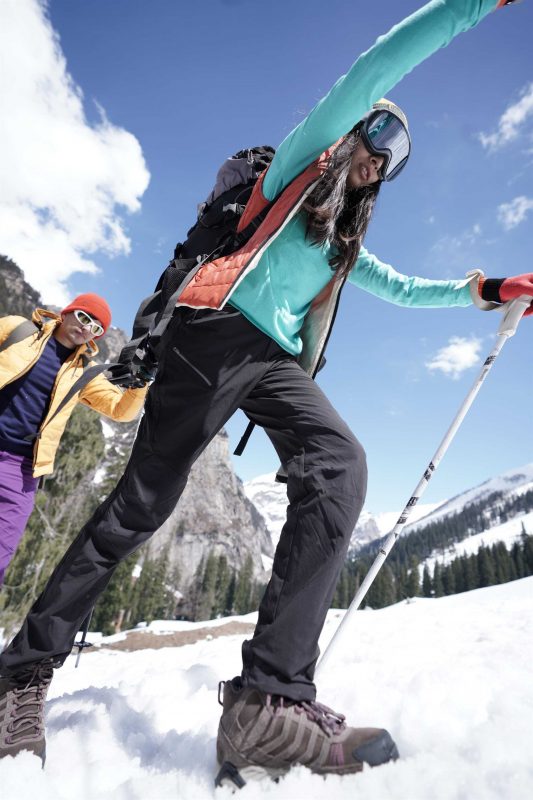
Bottoms for Winter
Woollen thermals act as great insulators during chilly cold weather. Synthetic material like nylon is also used for making snow pants or skiing pants. Depending upon one’s preferences, one can choose between these two.
Woollen thermals tend to be lighter as compared to synthetic snow pants. Kosha’s range of thermal winter pants should be checked for all those interested. Woollen pants provide considerably greater flexibility than normal, synthetic winter pants.
However, in areas known for untimely rains or extreme snow, a material that dries quickly and deflects water is required. In such cases, synthetic nylon works very well.
Kosha’s range of waterproof pants have features like thigh vents, elastic waist and airy fabric as it is made from breathable nylon. These waterproof pants can be worn by themselves in a temperature range of 15 degrees Celsius to 5 degrees Celsius. With proper layers, they can be worn in temperatures as low as -20 degrees Celsius.
You can check out merino wool thermal bottoms for men here | For women here
You can check out ski pants for men here | For women here.
Outerwear like puffer jackets and parkas for winter
Shell layers or outerwear is an obvious thing to pack especially if one is visiting a place of extreme, cold weather. Worn above the mid-layers, this final piece of clothing makes sure you are all tough and protected against the strong cold.
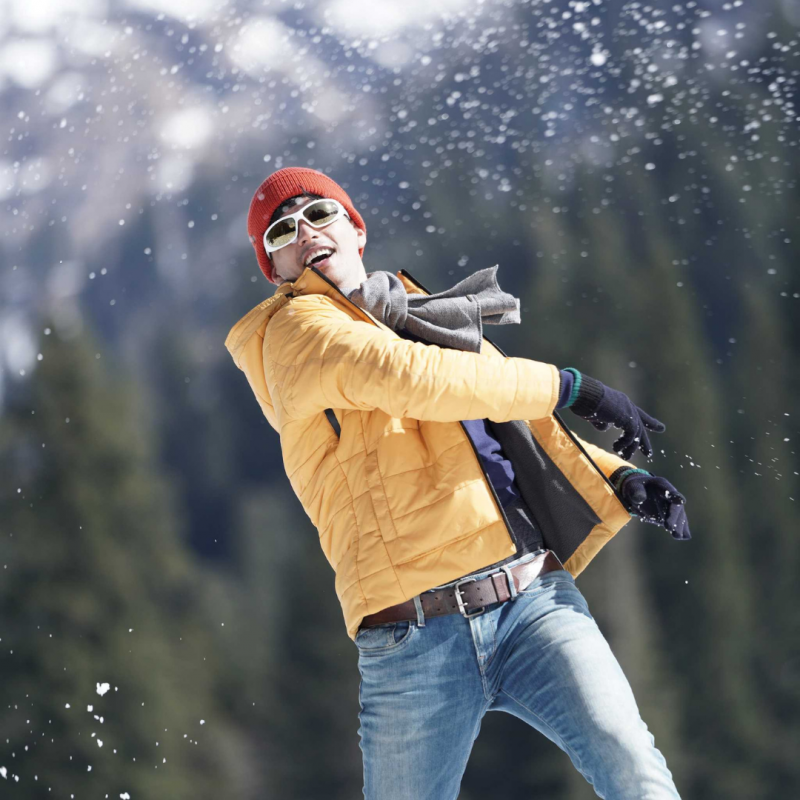
Woolen Jacket for Winter
Winter jackets need to be warm and comfortable but that doesn’t mean that they also need to be thick and heavy. With new technology, the new range of winter jackets is light in weight and compressible without compromising on the insulation that is provided. These jackets are light and easy to carry.
For activities like winter treks or skiing, one should make sure the jacket worn is not too sturdy. Treks already require you to carry backpacks for a long time. At such a time, avoid the unnecessary additional weight and cut down on the bulk wherever possible.
Kosha’s range of winter jackets is one way of not compromising on the insulation. These are lightweight jackets made especially to provide heat and warmth. By being breathable, these jackets also allow free flow of movements which is a necessary benefit.
Kosha has winter coats of puffer jackets and parkas, both of which make for a great selection.
Kosha’s fleece lined puffer jacket is mid-waist in length. It has a tough zip that runs through the front of the jacket thus ensuring a secure opening. The jacket is snowproof, windproof and water-resistant making it an allrounder! It also has one secure pocket inside for carrying important documents or papers.
Loaded with great features, the product also has two side pockets and sleeves with ribbed cuffs. There is a great option of a detachable hood for the required and optional additional insulation.
Kosha’s parka jackets are about knee-length in size. They are snow, wind and water-resistant as well. With a frontal zipper closure, they have one secure pocket inside and two cross pockets at the side. With a provision of a detachable hood, there are also some with a feature of ribbed cuffs.
Winter jackets are suitable in a temperature range that extends from 10 degrees Celsius to 5 degrees Celsius. With correct additional layers, these can be worn in temperatures that reach as low as -20 degrees Celsius.
You can check out warm jackets for men here.
You can check out warm jackets for women here.
Warm accessories
Winter accessories are, as are mentioned, the fourth informal layer in winter clothing. Apart from being the perfect prop in all the pictures, winter accessories constitute a very essential part of winter apparel.
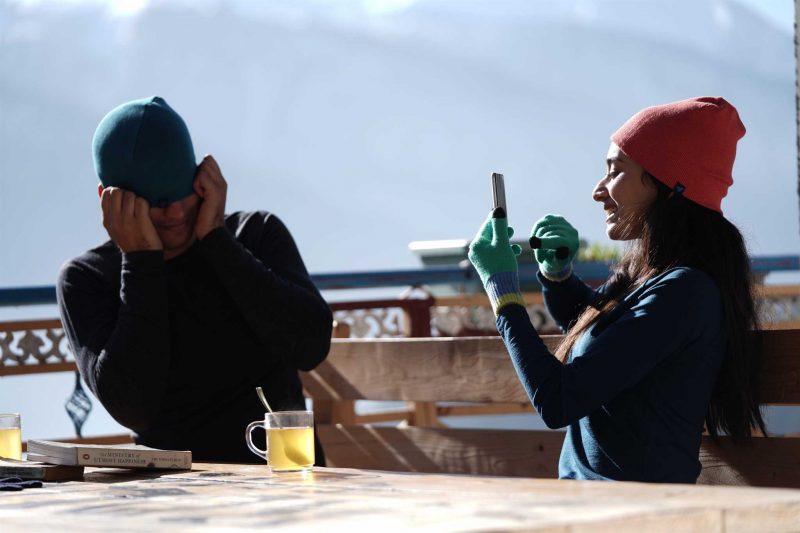
All weather merino wool accessories
Accessories like scarves, beanies, gloves, mufflers, stoles, monkey caps etc carry out a very important function. They cover the otherwise exposed areas of the body. Parts of the body like the neck region, hands and feet, ears and head etc. are constantly exposed to the chilly winds.
A winter accessory makes sure that all these areas are kept warm and comfortable.
Scarves and mufflers cover the neck region. They are usually made from wool. Kosha’s range of scarves and mufflers are made from 100% wool. This fabric ensures a feather-light cushiony feeling for the user.
Pair a brightly coloured scarf with an otherwise pastel-coloured outfit to get a great amount of contrast thus adding to your look!
Gloves or mittens cover your palms thus shielding them from touching icy-cold places. Gloves also do an additional feature of providing grip. Palms tend to go numb in extreme snow or cold and hence gloves or mittens must be worn.
Beanies or monkey caps make sure your ears and head are covered. Ears are one inlet of cool air most of us often forget to cover. If not by a monkey cap, it is advisable to wear cotton balls in your ears in places of extreme cold. Beanies also cover the head region.
These can also be worn in summers as one can choose to wear them only on the head and not cover the ears. This ensures protection from the harsh sun while also shielding the hair! Pro tip- Secure this on your head and use it in windy areas to protect your hair.
You can check out merino wool accessories for men here.
You can check out merino wool accessories for women here.
Warm shoes or snow boots
In order to have a successful winter trip, it is important to pay attention to the kind of footwear you carry. The shoes you decide to carry can literally make or mar your trip. Make sure you carry snowshoes rather than slippers or sandals as you will need durability in your footwear.
Proper grip is essential especially if the place you visit has the presence of snow.
Activities like trekking and hiking or even skiing, require shoes that work well in water and snow. However, do not compromise on comfort while looking for these shoes. Durability is another essential feature as nothing spoils a good trip than an emergency visit to the nearest shoe-repairers!
Carry the kind of footwear that is easy to maintain while also being light in weight. Bulky, showy shoes just add to the weight you carry.
Make sure the footwear you select lets your feet breathe! Along with that, also keep in mind that the kind of shoes you have carried is neither too tight, nor too loose. Maladies like blisters, shoe bites etc occur when you buy a pair that just isn’t your size.
Check out these snowshoes!
You can check out winter boots for men here | For women here.
Warm socks
In order to keep the feet protected and insulated, it is important that you carry comfortable socks. The socks should be soft on the skin as they shield the feet from harsh shoes. Socks also play a great deal in ensuring that your feet get an adequate amount of warmth.
If you’re visiting a place that frequently experiences snow, rainfall or hailstorms, make sure the kind of winter gear you carry is durable.
Kosha’s range of no-blister socks is an absolute must-have! Made out of merino wool, these have a feature of arch support. These are moisture-wicking while ensuring an odour-free experience for the consumer. Kosha’s no-blister socks are breathable and made of superior quality wool.
These socks can be worn by themselves in a temperature range that extends from 5 degrees Celsius to -20 degrees Celsius. (depending on one’s resistance to cold)
Check out these socks!
You can check out winter socks for men here.
You can check out winter socks for women here.
Travel tips on best places to visit in North India for summer and winter
This blog covers a lot of places to visit this outing season.However, India has many other destinations that are worth-visiting. The golden triangle of India is a very famous trip! Famous north India tours often include golden triangle tour packages. The triangle formed by the cities of Delhi, Agra and Jaipur forms the golden triangle! Proper planning makes even these tour packages golden!
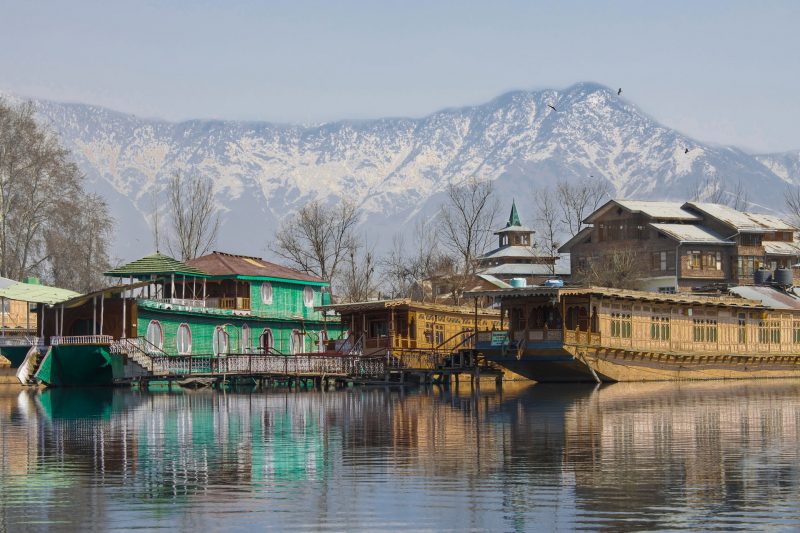
Best places to visit in North India summer and winter
Located only a few hours away from New Delhi, the city of Agra is very famous for having one of the seven wonders of the world in it! It cannot be a trip to India without a visit to the Taj Mahal.
Owing to this marvelous beauty, Agra comes under India’s top tourist places. Rajasthan is something to be visited on its own! It is the state that is one of the greatest examples of India’s ancient history. WIth palaces and palatial hospitality, places like Jaiselmer, Jodhpur etc welcome you!
Rajasthan also has many activities available like sam sand dunes’ desert safari camp! Something very different with snow-capped peaks of mountains and heavy snowfall would be Shimla which is up north.
The coming winter and summer seasons are a great time to plan a cautious and safe trip in India owing to the recent stop in outings. The country experiences three main seasons of summer, monsoons and winter.
As the monsoon season is characterized by very heavy rainfall in most parts of the country, it is not a very good season for planning a trip. However, there are treks organized during this season especially for showcasing the country’s nature and greenery.
Whether you make for a beach person or a hill person, it doesn’t matter when it comes to planning a trip. To reminisce on successful trip adventures, make sure that you do a lot of research!
Research about anything and everything is essential. Research about the kind of place you are visiting, read featured reviews and articles, look up hotels, tour packages, trek organizers etc. book well in advance. When it comes to the specifics, also look at the different kinds of food cuisine available along with the type of clothes to be carried.
Depending upon the place and time of visit, an estimation of the overall temperature can be attained. Based on this, ensure you carry all the necessary travel gear.
When it comes to summer trips, keep yourself as airy as possible. Wear loose t-shirts and comfortable pants. Avoid wearing heavy materials like denim as those would attract more heat.
Wear whites and pastels, avoid wearing black. Remember to carry and apply sunscreen! The most important thing to remember would be Hydration! Keep hydrating yourself. Have lots and lots of water throughout the trip.
The scorching heat of the sun will make you thirsty, do not avoid that! Keep yourself fresh and hydrated! Another essential thing would be covering your head. Be it scarves, caps, hats or any other kind of headgears, make sure you carry at least one of these to ensure you are protected.
For winter outings, carry the correct kind of clothing. Do not forget to follow winter layering when you get ready. Winter accessories are also a key garment that complete a winter outfit. Based on the nature of the climate seen in the place you visit, ensure that you carry the required winter gear.
For instance, for places that experience hailstorms, snowstorms, or heavy rains, the kind of winter wear you carry must be snowproof, windproof and waterproof. Look at reviews of people who have been to these places and get their ideas.
Kosha has a physical store in Khar (west), Mumbai where you can drop in for a free consultation for any kind of winter wear-related queries! You can also explore and purchase via the Kosha website. Visit Kosha for all your clothing and gear needs.
So, where are you heading this summer or winter?
This article is written by Kosha Team Member- Sanika!